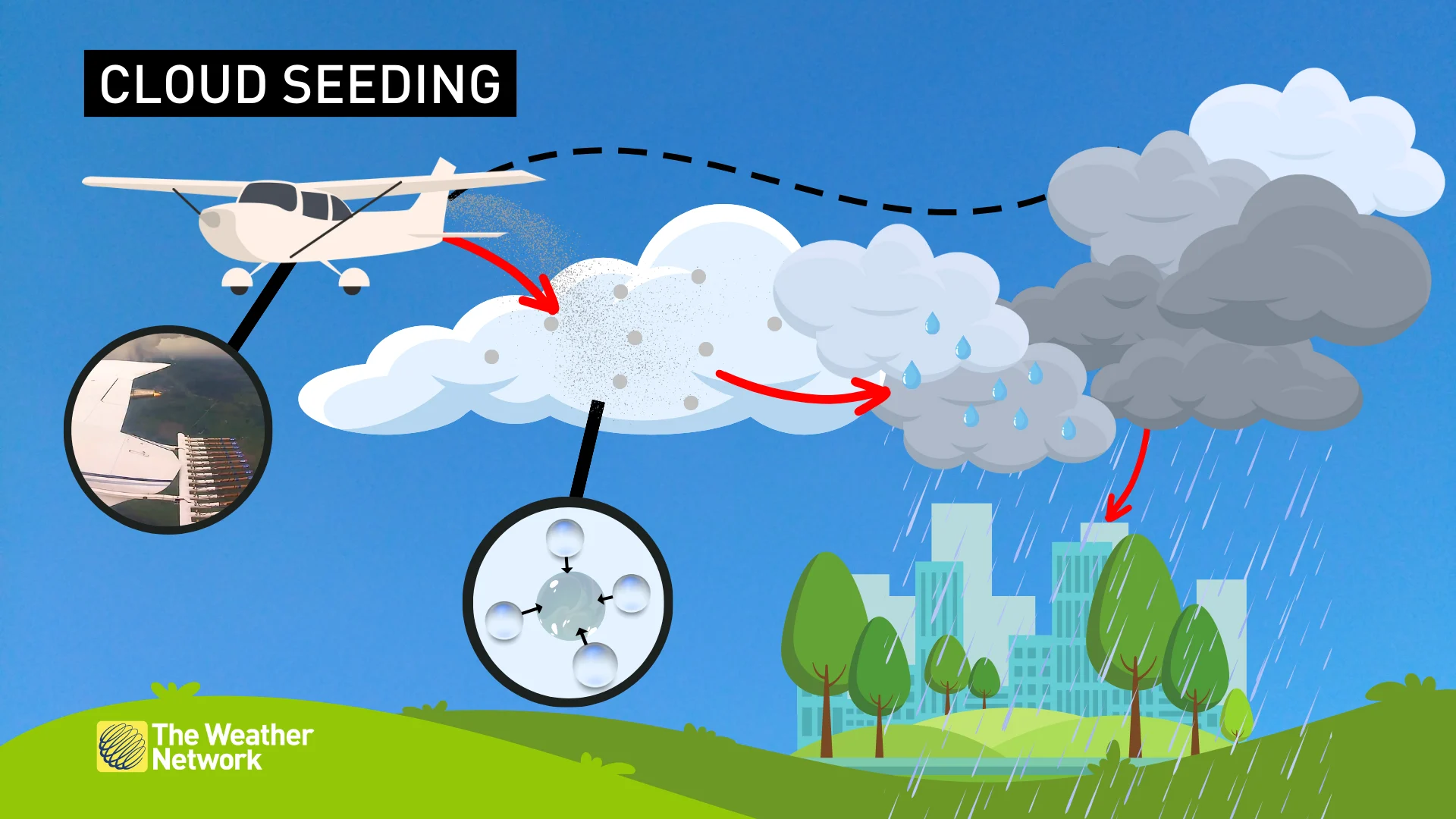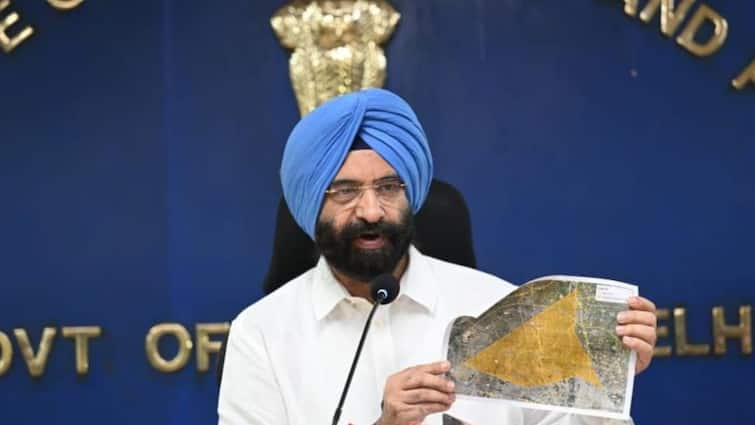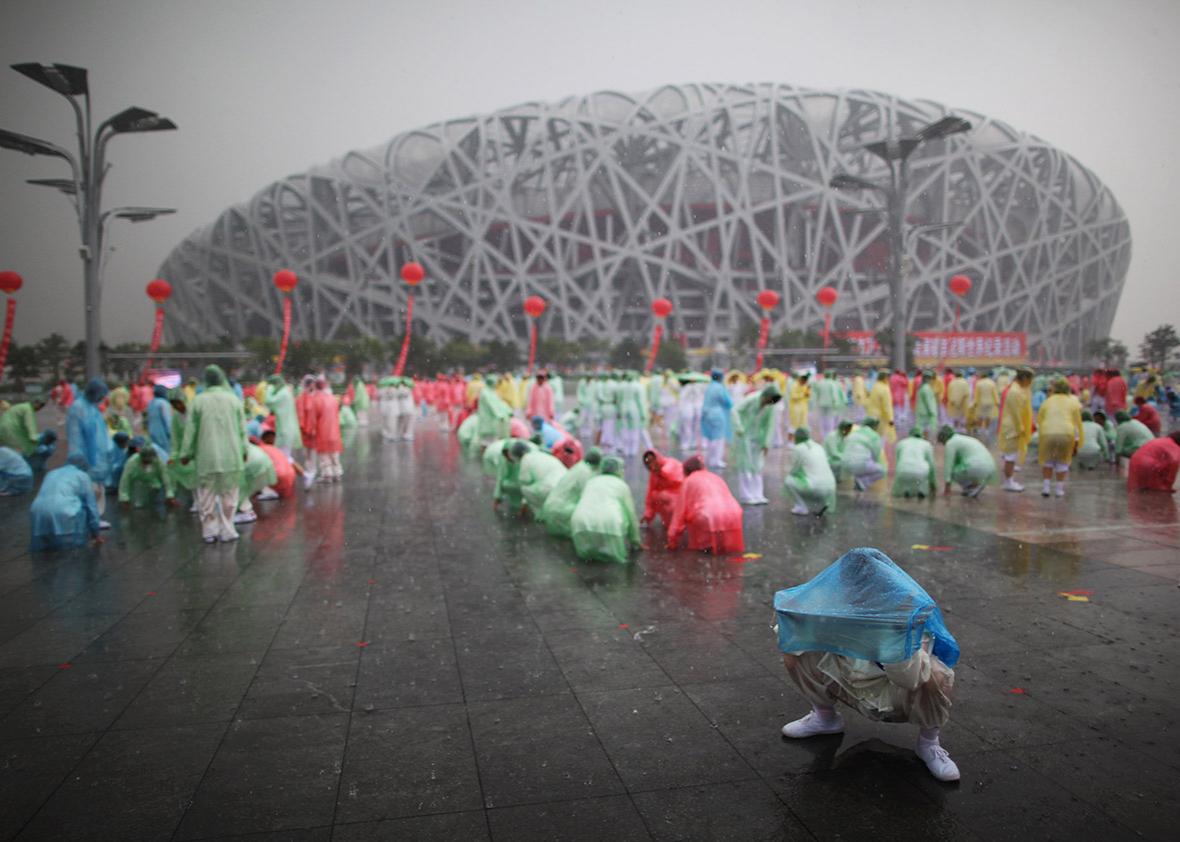Cloud Seeding, New Delhi: As Delhi gears up for the upcoming winter season, like every year managing the dreadful winter pollution remains on the cards, and with the Delhi High Court asking the government to consider cloud seeding, the government seems all set for the same in the first week of October before Diwali. In order to deal with the seasonal winter fog the city planners have been trying to experiment with cloud seeding specially during the post Diwali times when the entire city is engulfed into thick smoke due to bursting of crackers which, mixed with the winter mist becomes a thick layer of smog with severe health implications.
After a long legal tussle the Delhi High Court in September agreed for cloud seeding which can be used to trigger artificial rainfall to battle the city’s infamous thick blanket of winter smog, the choking haze that turns every breath into a health risk.
This isn’t just some small test, it’s India’s most ambitious dive into weather modification yet, with full approval from the central government to confront Delhi’s worsening air pollution nightmare. Year after year, as cooler months roll in, the capital gets blanketed in a toxic fog from car exhaust, factory smoke, crop burning, and more, pushing air quality to dangerous levels that force schools to shut down and hospitals to overflow. Cloud seeding steps in as a clever potential saviour, aiming to wash away those harmful particles with induced rain.
But don’t get too excited just yet experts are quick to remind us that this isn’t a miracle cure or a silver bullet. It’s simply one helpful tool in a much larger toolkit, working alongside efforts like cleaner transport, stricter emission rules, and green initiatives to truly tackle the root causes of environmental damage and build a healthier future for everyone.
What Is Cloud Seeding? Origins and Evolution
Cloud seeding is a weather modification technique that involves dispersing substances into the atmosphere to encourage cloud condensation and precipitation. At its core, it enhances the natural process of rain formation by introducing agents like silver iodide, dry ice, or salt particles into clouds, which act as nuclei for water droplets or ice crystals to form around, ultimately leading to rainfall.

The concept originated in the mid-20th century, pioneered by American scientists in the 1940s. Vincent Schaefer, a researcher at General Electric, accidentally discovered the principle in 1946 while experimenting with supercooled clouds in a laboratory freezer. He introduced dry ice, which triggered instant ice crystal formation.
This breakthrough led to the first field trial in 1946 over Mount Greylock in Massachusetts, where an airplane released dry ice into clouds, reportedly producing snow. Bernard Vonnegut, Schaefer’s colleague, later refined the method by identifying silver iodide as a more effective seeding agent due to its crystal structure mimicking ice.

From these humble beginnings, cloud seeding spread globally. By the 1950s, the United States launched Project Cirrus, testing the technique for drought relief and hurricane mitigation. The technology gained traction in arid regions, with the Soviet Union experimenting in the 1960s to boost agricultural yields. Today, over 50 countries employ cloud seeding for purposes ranging from rainfall enhancement to hail suppression and fog dispersal.
However, its origins trace back to those post-World War II innovations, driven by a mix of scientific curiosity and practical needs like water resource management.
The Delhi Cloud Seeding Order: Details and Implementation
In a landmark decision, the Delhi government has secured approval from the Directorate General of Civil Aviation (DGCA) to conduct cloud seeding experiments in the National Capital Region from October 1 to November 30, 2025. This order, facilitated by the Indian Institute of Technology (IIT) Kanpur, authorizes up to five sorties using a Cessna 206-H aircraft registered as VT-IIT. The flights will launch from Hindon airbase, targeting north Delhi areas over 100 square kilometers per sortie, strictly adhering to Visual Flight Rules (VFR) to ensure safety.

The order specifies several constraints: no operations in restricted airspace, prohibition of aerial photography, and exclusion of foreign crew members. Coordination with air traffic control is mandatory, and all activities must follow approved manuals. Post-seeding, water samples will be collected to monitor for chemical residues, ensuring no environmental contamination. The project’s budget, approved by the Delhi cabinet, allocates approximately ₹3.2 crore, including ₹55 lakh per trial and ₹66 lakh for setup.
This initiative represents India’s most significant artificial rain experiment to date, with a tentative trial window of October 9-11, 2025. If meteorological conditions such as sufficient cloud moisture and temperature gradients are favorable, as forecasted by the India Meteorological Department (IMD), the experiments could proceed, potentially washing pollutants from the air.
Why the push now?
Delhi’s push for cloud seeding comes amid a dire air quality crisis, exacerbated by winter’s stagnant air, temperature inversions, and spikes in PM2.5 levels from sources like crop stubble burning, vehicular emissions, and industrial activities. The city’s Air Quality Index (AQI) often soars into the “severe” category, leading to health emergencies, school closures, and economic losses estimated in billions.

Chief Minister Rekha Gupta has championed the project, asserting that Delhi is “fully geared to fight pollution” following central approval. She has countered critics by questioning why the method is now feasible after previous dismissals, highlighting a shift in political stance.
The primary reason for this urgency is the seasonal smog that engulfs Delhi each winter, turning the city into a toxic gas chamber. Cloud seeding is positioned as a stop-gap measure to induce rain, which could settle particulate matter and provide temporary relief.
With climate change intensifying weather extremes, authorities see this as an innovative supplement to existing measures like odd-even vehicle restrictions and anti-stubble burning campaigns. The push also aligns with broader national goals under the National Clean Air Programme, aiming to reduce pollution by 20-30% by 2024, though deadlines have slipped.
Public fatigue with recurring health issues like respiratory ailments, eye irritation, and premature deaths has fueled support. Experts like D. Raghunandan from the Delhi Science Forum note that seeding requires clouds with at least 50% moisture, yielding only modest rainfall increases of 3-5%. Nonetheless, the government’s confidence stems from IIT Kanpur’s technical expertise and preliminary studies suggesting potential efficacy in Delhi’s winter conditions.
Environmental Feasibility and Potential Risks
Assessing the environmental feasibility of cloud seeding in Delhi involves weighing its benefits against ecological and meteorological risks. Proponents argue it’s feasible under specific conditions: clouds must have adequate supercooled water droplets, temperatures between -5°C and -20°C, and stable updrafts. In Delhi’s context, winter inversions trap pollutants, but moist clouds from western disturbances could be ideal targets.
Feasibility studies by IIT Kanpur indicate that seeding could enhance precipitation by 10-20% in optimal scenarios, potentially reducing PM2.5 levels by 20-30% for a few hours post-rain. The method uses silver iodide, which is non-toxic in small quantities and disperses quickly, minimizing long-term environmental harm. Water sampling post-trials will verify this, addressing concerns about chemical fallout.

However, skeptics highlight limitations. Cloud seeding isn’t guaranteed; success rates vary from 10-30% globally, depending on weather. Environmental risks include unintended consequences like altered rainfall patterns, potentially causing droughts in downwind areas or flash floods locally. In Delhi, excessive rain could lead to waterlogging, straining drainage systems already overwhelmed by urbanization.
Broader ecological concerns involve ecosystem disruption: artificial rain might affect soil chemistry or biodiversity if seeding agents accumulate. Critics argue it diverts focus from root causes like emission controls, advocating for sustainable solutions such as electric vehicles and green infrastructure. While feasible in theory, experts stress that cloud seeding’s environmental impact must be monitored through rigorous data analysis, ensuring it complements rather than replaces systemic reforms.
Global track record: What the world has learned
Cloud seeding’s track record worldwide offers valuable insights into its potential for Delhi. One of the most prominent examples is China’s experiment with cloud seeding during the 2008 Beijing Olympics. Facing severe pollution and drought threats, Chinese authorities deployed over 1,100 rockets and 32 aircraft to seed clouds, reportedly clearing skies for the opening ceremony and reducing air pollutants.

The operation, part of a $40 million program, involved silver iodide and was credited with inducing rain to wash away smog, though some studies attribute success partly to natural weather shifts. Beijing’s experience demonstrated seeding’s role in short-term air quality management, but it also highlighted scalability challenges and high costs.
In the United States, programs like Wyoming’s Weather Modification Pilot Project (2005-2014) aimed at increasing snowfall for water reservoirs. Evaluations showed a 5-15% precipitation boost in seeded areas, aiding drought-prone regions, but results were inconsistent due to variable cloud conditions. Israel’s long-running program since the 1960s claims 10-15% rainfall increases over the Sea of Galilee, supporting agriculture, yet debates persist over statistical validity.
The United Arab Emirates has aggressively pursued cloud seeding since the 1990s, operating a fleet of aircraft to combat desert aridity. In 2021, operations reportedly generated 168 million cubic meters of additional water, equivalent to filling thousands of Olympic pools. Success here relies on advanced radar and modeling, but environmentalists warn of regional water imbalances.
Less successful cases include Australia’s Snowy Mountains scheme, where early trials in the 1950s yielded mixed results, and some U.S. efforts during droughts that failed due to insufficient clouds. Globally, the World Meteorological Organization estimates seeding enhances precipitation by 5-20% under ideal conditions, but it’s not a standalone solution.
For Delhi, these examples underscore the need for precise execution and realistic expectations, learning from China’s Olympic triumph in pollution mitigation while avoiding overreliance seen in some failed experiments.
Challenges, Public Reaction, and Future Prospects
Despite optimism, challenges abound. Political undercurrents, with AAP accusing the BJP of flip-flopping, reflect deeper governance issues in pollution management. Public reaction is mixed: residents, weary of smog-related health crises, express cautious hope, but many demand transparency on costs and efficacy.
Experts unanimously agree cloud seeding is tactical, not transformative. It must integrate with emission reductions, afforestation, and public transport upgrades. If trials succeed, scaled operations could follow in November – December 2025, with data analysis guiding future policies.
As Delhi steps into this brave new world of weather wizardry, the experiment challenges us to rethink our relationship with nature will we master the skies, or learn that true salvation lies in preventing the storm before it brews? In the end, cloud seeding may summon rain, but it’s collective human resolve that will clear the air for a sustainable tomorrow.

